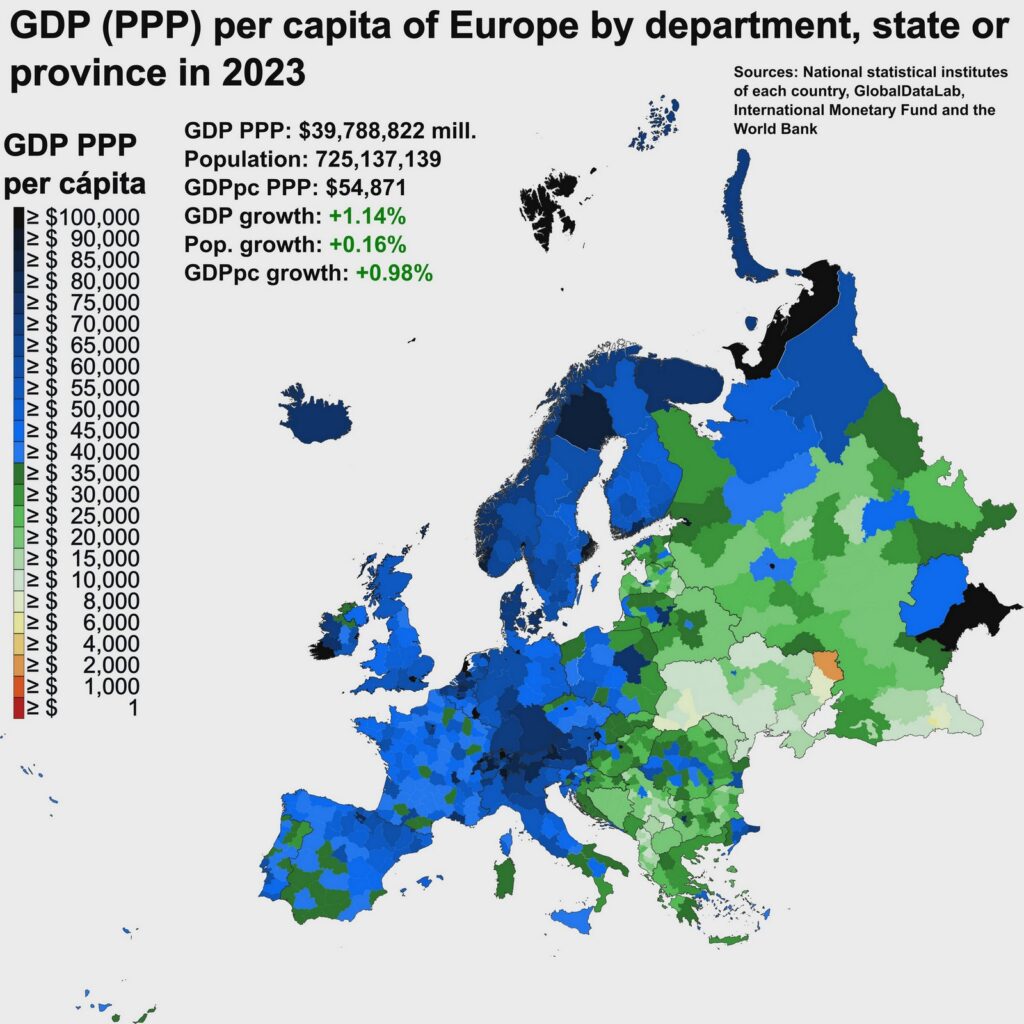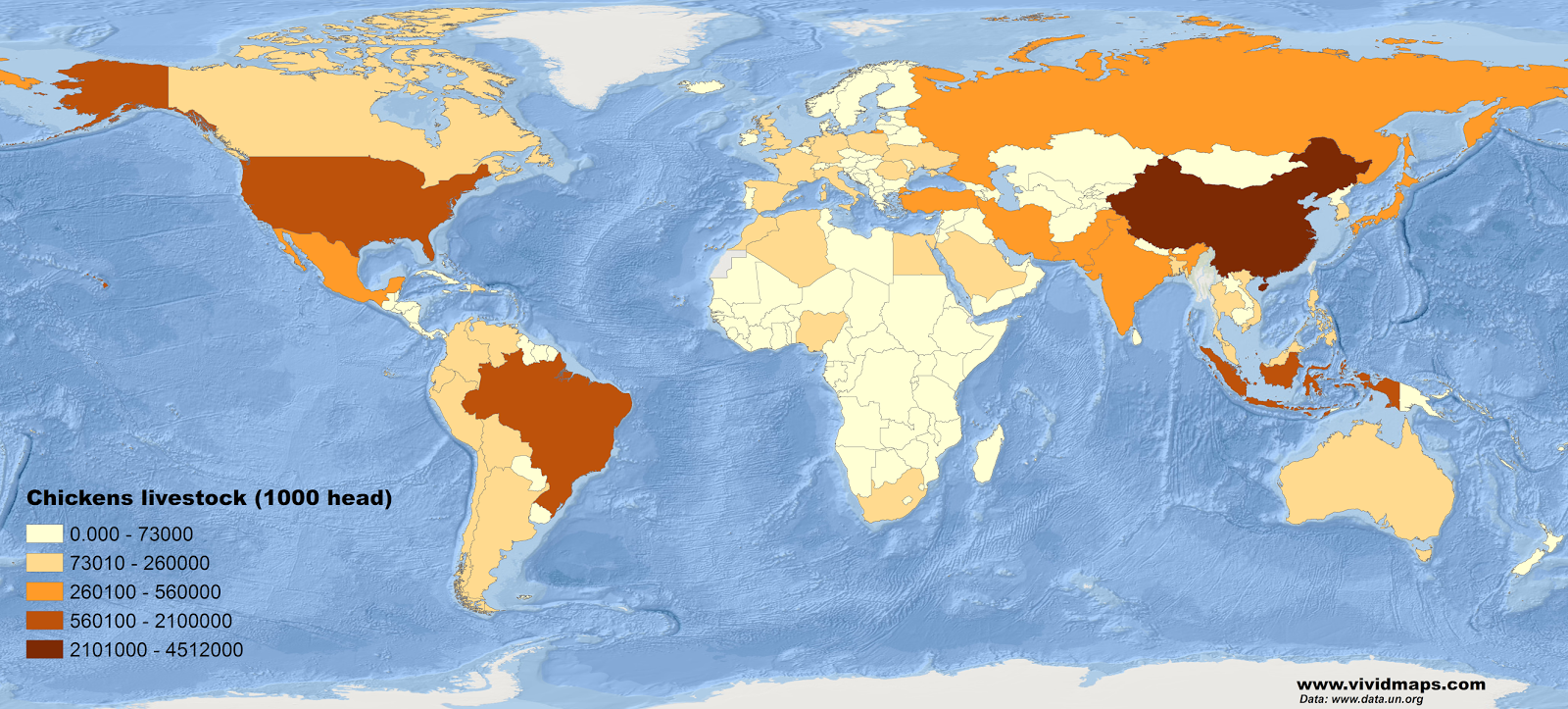GDP per capita for Europe by subdivision
When people want a quick way to compare how rich or poor different places are, they often look at GDP per person (adjusted for purchasing power, PPP). It simply divides a region’s total economic output by its population. The number isn’t perfect – it doesn’t tell you how wealth is shared – but it’s still one of the clearest benchmarks for regional prosperity.
The map below, created by Reddit user adventmix shows GDP per capita at the level of departments, provinces, and states across the European continent.

One thing jumps out right away: much of Eastern Europe is shaded in lower-income colors, while certain spots – the Baltic capitals, Bucharest and Cluj, Moscow and Minsk, and Russia’s oil-producing regions – stand out with far higher values.
Why the split?
History plays a huge role. After the breakup of the Soviet Union, economies across the East went through a painful transition. Many countries lost nearly half their GDP in the 1990s before growth picked up again. The gap that opened up back then has never fully closed.
Another factor is people leaving. Since EU enlargement, large numbers of workers from countries like Poland, Romania, and the Baltics have headed west to find better pay. While that brought in remittances, it also meant smaller local workforces and less economic energy in smaller towns and rural areas.
The type of economy matters too. Heavy industries collapsed or were sold off during the 1990s transition, and many regions never replaced them with new growth sectors. By contrast, capital cities and resource zones often kept a concentration of wealth and investment.
The Baltic states are an exception. After joining the EU in 2004, they quickly opened up to trade and investment. Growth was rapid, and their living standards rose much faster than many expected. Back in the mid-1990s, average income there was only about a quarter of Western Europe’s level; by the mid-2010s it had climbed to well over half. Romania shows a similar trend – cities like Bucharest and Cluj have drawn in services and tech jobs, lifting their incomes far beyond the national average.








